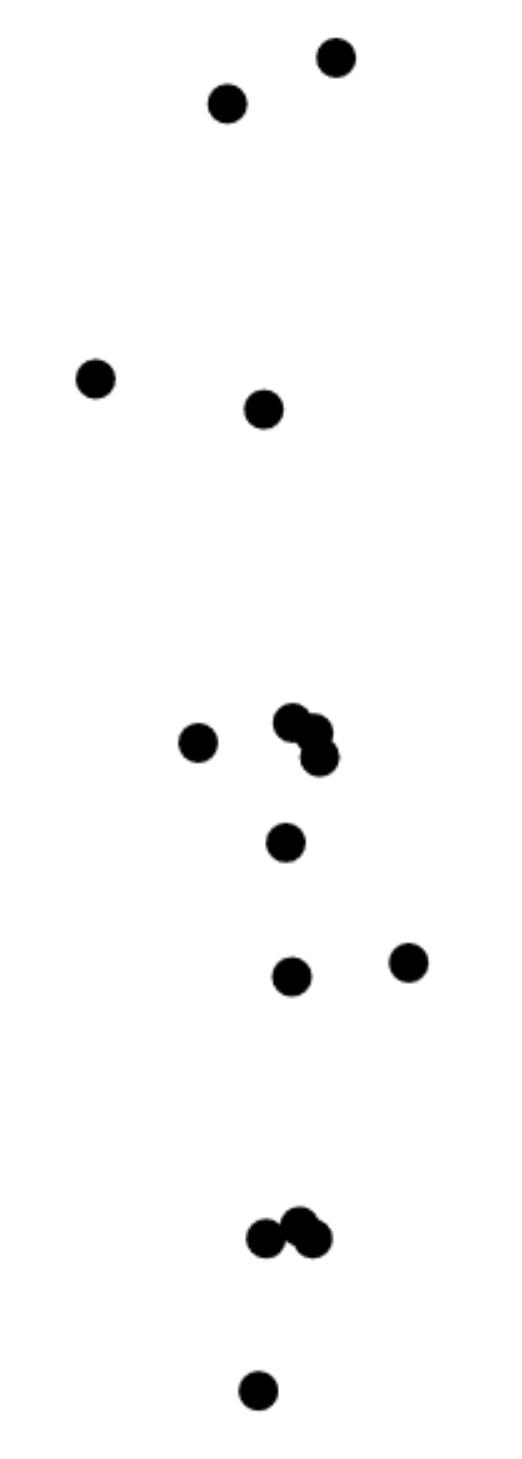What do you see in the image below? What about the one next to it?

Motion perception provides us with information about what object we are observing. Think about someone you know with a distinctive style of walking. You may know someone who always appears to have a hop in his or her step, and you may know someone else who seems to be trudging around all the time. These motion cues may help you recognize that person. Consider running into one of these people at night, when you cannot get a good view of the person’s face. Detecting the style of walking may allow you to recognize the person.
Johansson (1973) developed an ingenious method to examine this phenomenon. This method is called the point-light walker display. A point-light walker display is one in which small lights are attached to the body of a person or other animal, which is then filmed moving in an otherwise completely dark environment. In Johansson’s experiment, highly reflective tape patchers were placed on a person’s body, including the wrists, elbows, shoulders, ankles, knees, and hips. He then video recorded the person walking, running, and dancing in total darkness. The way he captured the mostion allowed that the only thing visible to viewers were the patches of tape, and not the person’s body.
When Johansson (1973) showed participants still photographs of the light patterns (see the example below.), the participants were unable to extract any form information from the photographs. However, when participants viewed videos of the light patterns, they were able to detect the human form when it was walking or running. Moreover, the participants were able to distinguish between forms of motion, including walking and running.
In this activity, view a computer created walker and manipulate a few variables to see how they impact your perception of the walker. For a more complete version, upon which this walker is based, you can go to https://www.biomotionlab.ca/html5-bml-walker/.
To see the illustration in full screen, which is recommended, press the Full Screen button, which appears at the top of the page.
On the Illustration tab, you can start, stop and alter the motion of squares to experience optic flow.
Below is a list of the ways that you can alter the illustration. The settings include the following:
Move: start and stop the motion of the walkder.
Direction: rotate the walker so it is walking a different direction.
Holding the plus (+) or minus (-) sign down will continuously change the walking direction.
Speed: change how fast the walker is walking.
Show Lines: add or remove lines between the dots of the walker.
Pressing this button restores the settings to their default values.